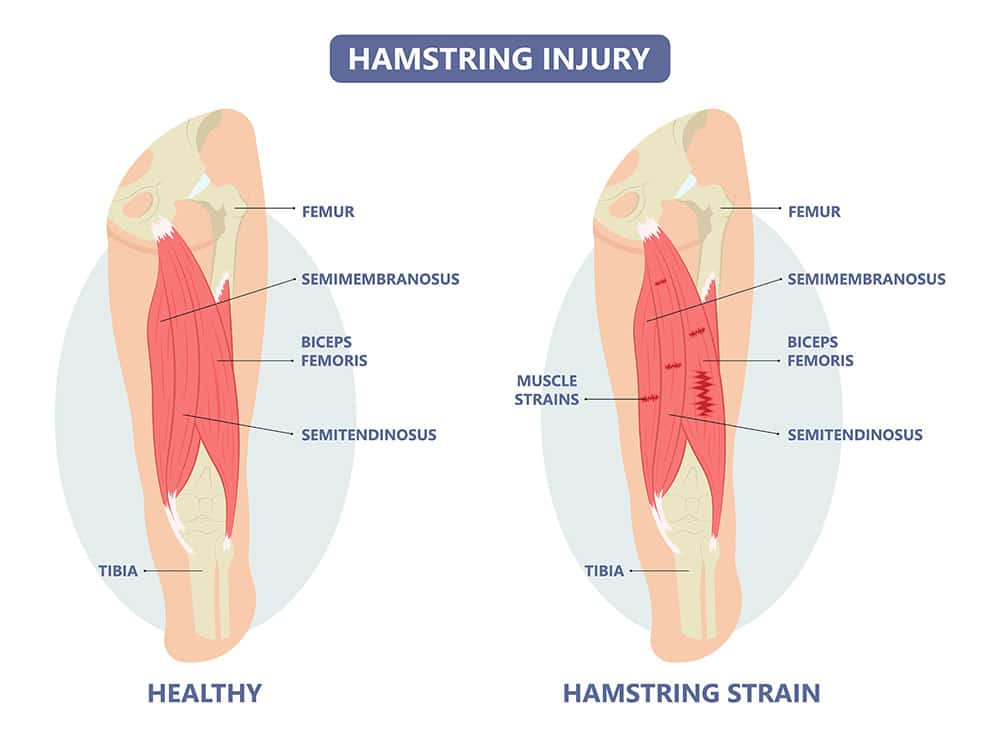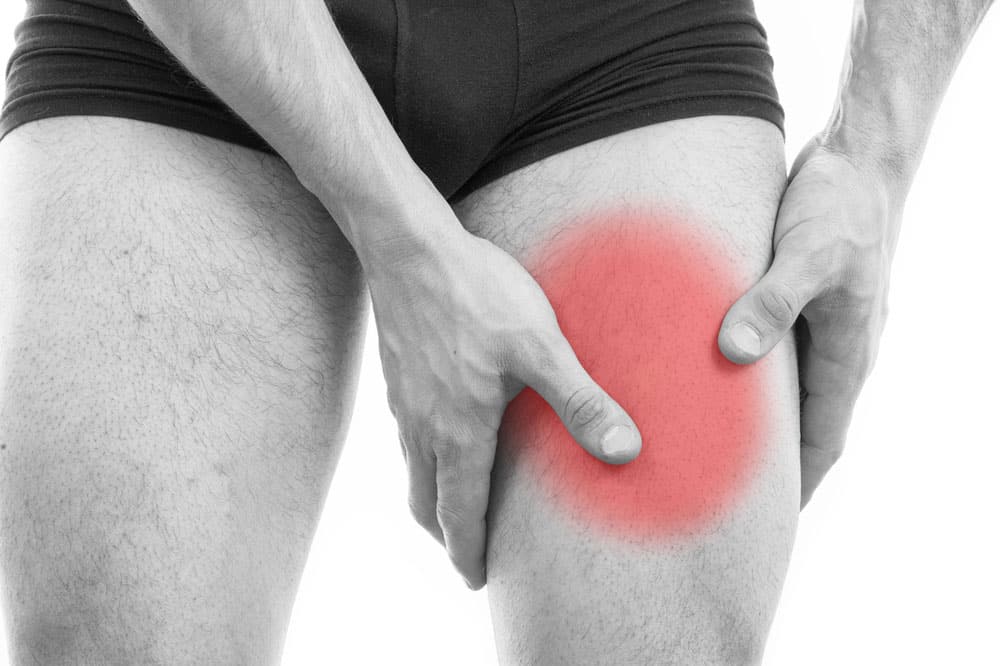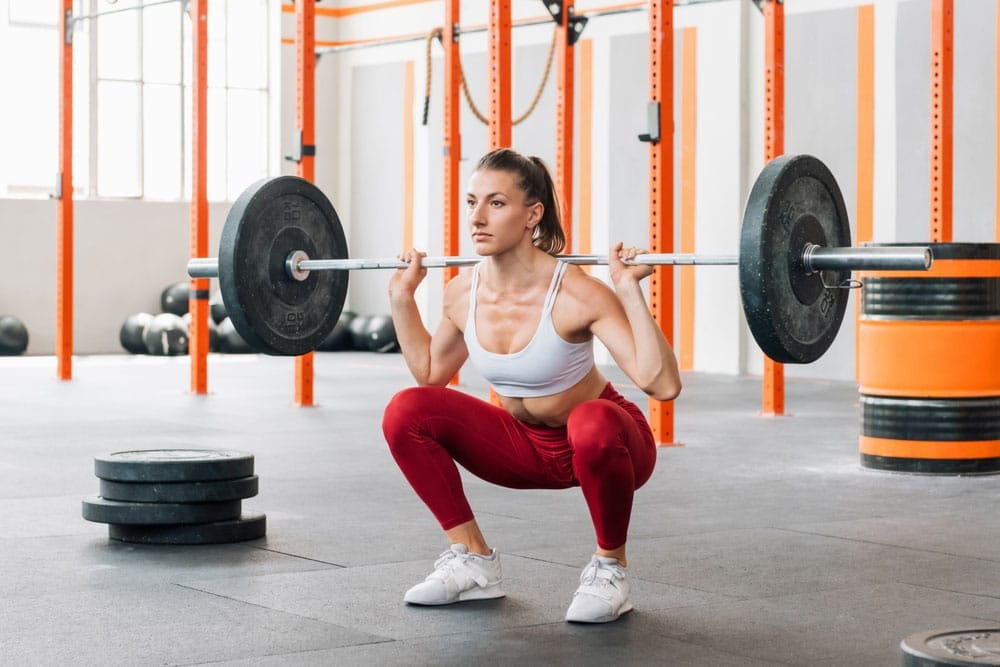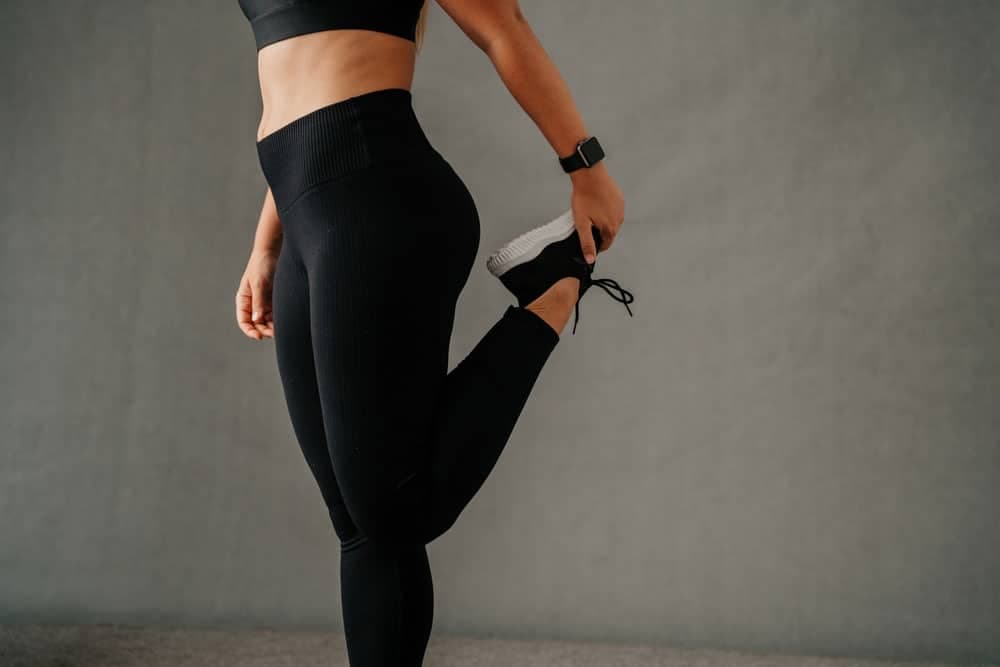Quad vs. Hamstring: Strength, Treating Imbalances & Training Concerns
Learn about quad vs. hamstring workout and injury considerations. Understand how these agonist and antagonist muscles work together.
If you’ve ever hit a leg day, you’re probably familiar with working both your quadriceps (fronts of your thighs) and your hamstrings (backs of your thighs). But do you really know how quads vs. hamstrings measure against one another in terms of strength and power?
This article is a complete quads vs. hamstrings showdown. We’ll learn what each of these muscles does to your body as you work out. You’ll get a brief summary of potential injuries to the hamstrings and quads and their severity. Plus, see which muscle is stronger.
Next, you’ll see which muscle you should work more between the hamstrings vs. quads and understand how to tell if your body type is hamstring- or quad-dominant.
What do your quads do?
The quadriceps femoris are the muscles at the front of your thighs.
These muscles extend your legs from the knee joints and flex your hips. Your quad muscles have the highest volume of all the muscles in your body.
Although we just call them “the quads,” this muscle group is actually made up of four different muscles.
- Vastus Medialis
- Vastus Lateralis
- Rectus Femoris
- Vastus Intermedius
These muscles work together to help you with knee extension and hip flexion.
What do your hamstrings do?
The hamstrings are the muscles at the backs of your thighs. They help you to extend your legs backward and flex your knees.
Strong and healthy hamstrings are critical to several exercises that you do daily.
Sitting down, standing up, bending over, running, or jumping all require healthy hamstrings. This is lucky for you if you do the work to keep your hamstrings in shape!
But most people have tight or stiff hamstrings.
Why do your hamstrings get tight?
Our sedentary modern lifestyles are mostly responsible for this problem. Current Concepts in Muscle Stretching suggest that according to the American College of Sports Medicine, you should static stretch (stretch in place) after active warm-ups for at least 2 to 3 days weekly. Hold each stretch for 15-30 seconds and repeat for 2 to 4 reps. This is a good way to relieve muscle tightness in your hamstrings.
Like the quads, your hamstrings also have four main muscles. These are:
- Biceps Femoris: Short Head
- Biceps Femoris: Long Head
-
- Semitendinosus
- Semimembranosus
These muscles also have a codependent relationship. They work together to reverse the work of your quads, helping you flex your knees.
Injury Concerns
Hamstring Injuries

.
- Mild strain or pull (Grade 1): Mild damage to the muscle fibers (<5%). Causes only slight loss of motion or function.
- Partial tear (Grade 2): 5-50% of muscle fibers damaged. Causes some muscular impairment.
- Full muscle tear (Grade 3): Severe strain. Complete or very severe loss of function. Over 50% of muscle fibers are damaged.
Quadricep Injuries

Your quads can experience the same types of tears that your hamstrings do, including grades 1, 2, and 3 injuries.
Unlike the hamstrings though, quadricep tendon tears are quite rare.
When they do happen, they’re most likely to affect men in middle age, resulting from either direct or indirect trauma to the quads.
Exercise and Training

How do you train the quad vs. hamstring muscles?
Fortunately, as we’ve seen these muscles work in complementary, yet opposite, ways. There are many targeted workouts you can use to hit both your quads and hamstrings in one go.
What better way to start things off than with the squat?
The “king of exercises” prioritizes one muscle on the descent and the other on the ascent. Your hamstrings help flex your knees as you drop and your quads engage to straighten your knees and flex your hips as you return to the standing position.
Think you know how to squat? You may have mastered the typical squat progression exercises like doing a barbell squat or unweighted squat.
But we’re betting you haven’t looked into all the squat variations out there!
If you want to pound your quads and hamstrings into oblivion, it’s a good idea to become a squat master, whether you love the landmine hack squat, the pendulum squat, or prefer to stick with the old faithful: the tried and true barbell back squat.
Who knows? Maybe you can even work your way up to pistol squat progressions if you’re extra keen.
Learn more on squats, hack squat alternatives and everything to do with working your quads and hamstrings here:
Is a squat more hamstring or quad-dominant?
Okay, since we’ve run through a lot of squat variations to target your hamstrings and quads together, is the squat more of a hamstring or quad workout?
The answer is theoretically neither.
If you train your quads, hamstrings, and glutes effectively, a proper squat should balance the action between all three of these major lower-body muscle groups.
Is the hamstring the same as the quad?
Nope.
You can think of these upper leg muscles as opposites. Their functions counteract each other. In exercise science terms, we call these “agonist” and “antagonist” muscles.
No, your quadriceps are not villanous!
These are just fancy words for one muscle opposing the work of another. In a squat, the hamstrings would be your agonist muscles, while the quads would be your antagonist muscles, contracting to extend your knees and bring you back up as you stand.
If you’re curious, you can learn more here: Quantification of quadriceps and hamstring antagonist activity.
While your quads mainly extend your knees, your hamstrings mainly flex them (bring them to a bend). Although these are opposite muscular functions, they work in tandem.
Let’s put these two muscular functions together in the context of a squat.
When you bend your knees to come down into your squat, your hamstrings are helping you on the descent. On the flipside, once you drive back up to come out of your squat, your quads need to help out.
These muscles take over the action and help you extend your knees again, bringing you to a standing position.
Which is stronger quads or hamstrings?
In the quad vs. hamstrings debate, overall strength is a key consideration that comes up.
To answer this query, your quads come out on top!
Quads are much stronger than hamstrings overall. The ratio to which quads dominate hamstrings, though, has been hotly debated.
In a study on soccer players’ Muscle Strength and Hamstrings to Quadriceps Ratio, researchers studied what they called the “H:Q” ratio.
In other words, this ratio assessed the relative strength differential between hamstrings and quads.
What they found was that the hamstrings can be anywhere from half as strong (50%) to around 83% as strong as your quadriceps.
Should I work quads or hamstrings more?
You should train both the quads and the hamstrings equally.
Focus on heavy compound lifts that work muscles. We already saw how squats are probably the most beneficial move for both hamstrings and quads.
But you should incorporate these moves too:
- Lunges
- Reverse lunges
- Split squats
- Leg extension machine.
How do you tell if you are quad or hamstring-dominant?
Quad and hamstring dominance are especially noticeable among runners. This can affect your gait as you run, the tilt of your body and even your finishing time for a race.
And if you don’t try to balance out the effort between your quads and hamstrings, it could affect your injury risk too! We also see squatters who are more quad or hamstring-dominant.
So how can you tell if you are hamstring or quad-dominant?
If you have sore quads after you work out, you’re likely quad-dominant. Patellofemoral pain (PFP) also called “runner’s knee” is an injury that you may experience if you’re repeatedly hammering your quads with exercise. Knees crackling when squatting can be another symptom of this.
On the flip side, extra sore hamstrings may mean, you guessed it— hamstring dominance!
This may be easier to confuse with tight hamstrings.
Pain from overuse may have your hamstrings feeling lethargic or achy. Tightness from underuse may have your hamstrings feeling weak or creaky.
To remedy this, any strengthening you do for your hamstrings needs to come accompanied by a corresponding stretch. Bend over, touch your toes and stretch those hamstrings out (quads too)!

Stretch your workouts as far as they can go. The Flex App progresses as you do with plate tracking capabilities and auto progression.
References
Kellis E. (1998). Quantification of quadriceps and hamstring antagonist activity. Sports medicine (Auckland, N.Z.), 25(1), 37–62. https://doi.org/10.2165/00007256-199825010-00004
Mandroukas, A., Michailidis, Y., & Metaxas, T. (2023). Muscle Strength and Hamstrings to Quadriceps Ratio in Young Soccer Players: A Cross-Sectional Study. Journal of functional morphology and kinesiology, 8(2), 70. https://doi.org/10.3390/jfmk8020070
Owen, N., Healy, G. N., Matthews, C. E., & Dunstan, D. W. (2010). Too much sitting: the population health science of sedentary behavior. Exercise and sport sciences reviews, 38(3), 105–113. https://doi.org/10.1097/JES.0b013e3181e373a2
Verdano, M. A., Zanelli, M., Aliani, D., Corsini, T., Pellegrini, A., & Ceccarelli, F. (2014). Quadriceps tendon tear rupture in healthy patients treated with patellar drilling holes: clinical and ultrasonographic analysis after 36 months of follow-up. Muscles, ligaments and tendons journal, 4(2), 194–200
Related articles


Get fit with Flex
Build muscle & lose weight fast for free.
Available on iPhone + Apple Watch





